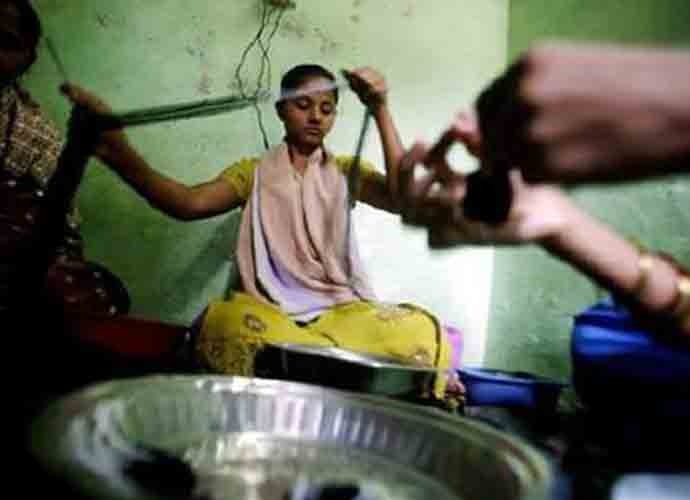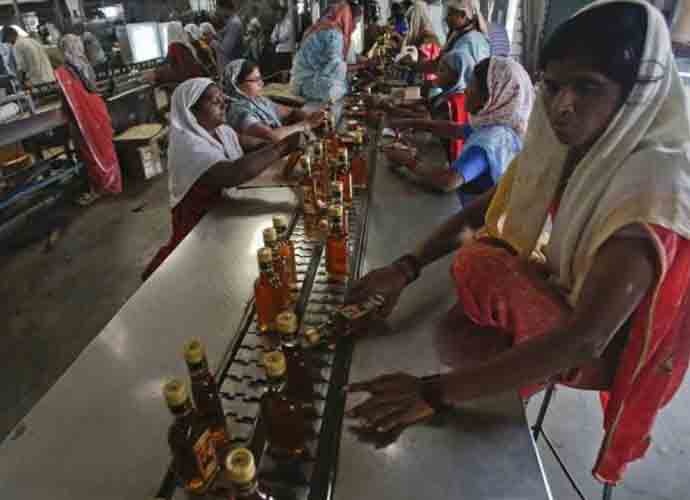Why microfinance schemes have failed the weakest of Dalits

Dalits in the neoliberal economy are finding it hard to secure job opportunities guaranteed under the reservation policy by the state. Given the history of discrimination faced by them, many are not in a position to undertaken entrepreneurial initiatives. Many of them haven't been able to reap the benefits of the microfinance schemes.
Microfinance institutions came up in the country to build 'capacity to aspire' for the poor and marginalised living miserable lives due to lack of adequate financial resources.

Microfinance schemes are spreading across India in the form of Swayam Sahayata Samooh (self help groups) leading to economic empowerment of many. The scheme has been receiving economic support through NABARD and other cooperative banks.
Several NGOs and social welfare organisations have come forward to support these activities across India. Microfinance schemes have achieved remarkable success among women, who are being given money for small business ventures allowing them to earn enough to take care of needs such as serious illnesses, education and marriages of their children.
Women have also been able to help their husbands set up small businesses because of the scheme. The Rajiv Gandhi Mahila Vikas Pariyojana (RGMVP) has remarkably helped women of central and eastern Uttar Pradesh.
The Rashtriya Sewa Bharati, a Rashtriya Swayamsevak Sangh affiliate, has also launched a microfinance scheme named Vaibhavshree that has helped many women.
Also, Rajiv Gandhi Mahila Vikas Pariyojana (RGMVP) has made a significant impact in central and eastern Uttar Pradesh.
My fieldwork showed that these initiatives have given a sense of community identity to the women beneficiaries of the schemes.
This is helping women demolish feudal and patriarchal dominance in rural societies giving them a space to share their feelings and earn respect.
A woman, who benefited from the RGMVP Swayam Sahayata Samooh in a village near Sultanpur, said that there is more respect for her and other women in the families now and they are considered now wise by their folks.
She also said that by virtue of being the breadwinners they are also decision-makers in the family now.
While the initiatives have helped eradicate social inequality at the grassroots level, my fieldwork showed that the empowerment has been restricted to women of relatively more dominant castes.
Interactions with various self help groups (SHGs) in central and eastern Uttar Pradesh showed that women involved are mostly from Patel, Yadav, Vaisya, Maurya and Chaurasia castes.
It is not easy to find women belonging to most marginalised Dalit (ati Dalit) groups. The benefits of the schemes are yet to reach the weakest of Dalit communities as so far it has only reached communities such as Chamar, Pasi, Dhobi and Kori.
In Uttar Pradesh, we have around 65 Dalit castes that fall under Scheduled Caste category. On the ground, we found women only from four-five Dalit caste groups.
The question that arises is why did this happen?
It seems like when NGOs start working on forming SHGs they pick up women from more visible castes who are better at speaking and interacting with people from external agencies.
Women from smaller Dalit communities such as Musahar, Nats, Sapera, Kuchbadhiya, Bansfor and others such as Bhujawa have not yet acquired that kind of visibility and lack the empowerment to come forward to take part in such initiatives.
That is where the stakeholders need to work harder.

When we asked people working with SHG why women from communities such as Musahar, Nat, Kanjar, Dharikar were fewer in number, we were told, "It is not easy to find them."
It is true that these communities are small in numbers and live mostly along the peripheries of villages and towns.
For example, Musahars traditionally have been a rat-picker community found in small numbers in districts like Amethi and Raebareli. There population is bigger in various districts of central Uttar Pradesh, Eastern UP and Bundelkhand.
With diversification of occupation, their population has been scattered across 24 districts of UP now. They are mostly concentrated in district like Sultanpur, Ambedkarnagar, Azamgarh, Maharajganj, Kushinagar, Jaunpur, Varanasi, Chandauli, Sonbhadra, Mirzapur et al.
Musahars generally live in bastis of their own on the outskirts of villages.
Similarly, many other Dalit communities also live along the peripheries and lack the capacity to participate in the socio-economic activities of the villages.
The groups working in the area must make efforts to reach out to these marginalised people. Their numbers might be small but democratic morality demands that we work towards their inclusion.
This story of marginalisation is not unique to Uttar Pradesh but is a pan-India phenomenon.
These Dalit groups did not matter even when the Bahujan Samaj Party (BSP) was in power in the state because the party's politics is based on the belief "Jiski jitani sankhya bhari, uski utni hissedari (numerical strength determines the community's importance)."
But the combined strength of these nearly 60 marginalised castes may actually make a lot of difference in a democratic set up.
The important question to ask is if these microfinance schemes also do not help them rise what is the chance for them to evolve as Dalit entrepreneurs? How will they be able to participate in the start-up schemes that the Narendra Modi government is pushing for?
Microfinance scheme have a huge potential for social upliftment of the marginalised. All efforts should be made to ensure they do not lose out.

